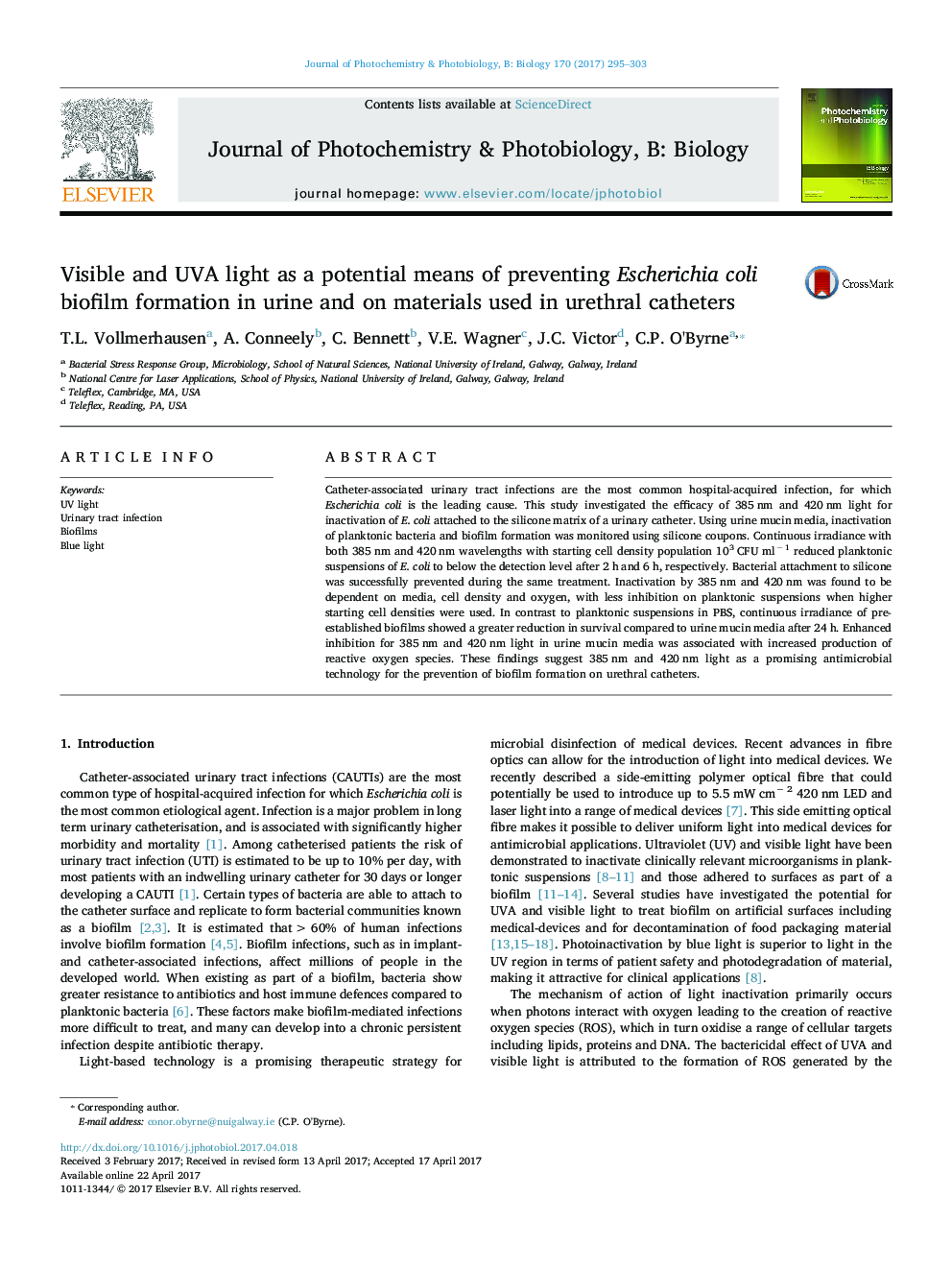| Article ID | Journal | Published Year | Pages | File Type |
|---|---|---|---|---|
| 4754491 | Journal of Photochemistry and Photobiology B: Biology | 2017 | 9 Pages |
â¢Continuous irradiance with light prevented biofilm formation on silicone disks.â¢Inactivation by UVA and blue light was dependent on media, cell density and dissolved oxygen.â¢Light inhibition in urine mucin media was associated with production of reactive oxygen species.
Catheter-associated urinary tract infections are the most common hospital-acquired infection, for which Escherichia coli is the leading cause. This study investigated the efficacy of 385 nm and 420 nm light for inactivation of E. coli attached to the silicone matrix of a urinary catheter. Using urine mucin media, inactivation of planktonic bacteria and biofilm formation was monitored using silicone coupons. Continuous irradiance with both 385 nm and 420 nm wavelengths with starting cell density population 103 CFU mlâ 1 reduced planktonic suspensions of E. coli to below the detection level after 2 h and 6 h, respectively. Bacterial attachment to silicone was successfully prevented during the same treatment. Inactivation by 385 nm and 420 nm was found to be dependent on media, cell density and oxygen, with less inhibition on planktonic suspensions when higher starting cell densities were used. In contrast to planktonic suspensions in PBS, continuous irradiance of pre-established biofilms showed a greater reduction in survival compared to urine mucin media after 24 h. Enhanced inhibition for 385 nm and 420 nm light in urine mucin media was associated with increased production of reactive oxygen species. These findings suggest 385 nm and 420 nm light as a promising antimicrobial technology for the prevention of biofilm formation on urethral catheters.
